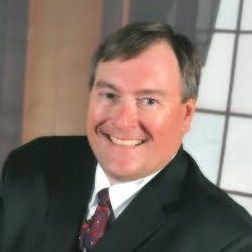- Home
- About
- Courses
- IR/INFO CONFERENCE
- Software
- EXPERT SERVICES
- STANDARDS
- Proposal Templates
- Electrical Systems & Rotating Equipment
- Building Envelopes
- Insulated Roofs
- Photovoltaic Systems
- Pest Detection
- Yachts and Small Craft
- Thermal Imaging of Horses
- Optical Gas Imaging
- Measuring Reflected Temperature
- Measuring Emittance
- Measuring Transmittance
- Distance/Target Size Ratios
- Complete Series
- Resources
- BUSINESS OPPORTUNITIES
- STORE

Director’s Message

An infrared inspection system consists of infrared imaging equipment, a thermographer, and the knowledge that he/she possesses. Of these three things, the greatest limiting factor in an infrared inspection system is the thermographer.
In order to be an effective thermographer, one must be trained in the following:
- Theory and construction of the object or system being inspected
- Infrared theory and heat transfer principles
- Use and operation of infrared imaging equipment
- Non-contact temperature measurement error sources and how to avoid or correct for them
In addition to the above, qualified thermographers must also be experienced with inspecting the subject system. When all things are considered, effective thermographers need considerable training and field experience. Making thermography look simple is a true testament to the skills of a professional thermographer.
The next time you hear the dismissive claim that thermography is easy, remember, it is only easy after someone has invested considerable time and effort to learn the art and science of the trade. In a magic show, the magic comes from the magician, not the wand. In thermography, the magic comes from the thermographer.
IR/INFO 2016 Conference – A Magical Time in Orlando

IR/INFO was attended by infrared thermographers, PdM technologists, and building inspection professionals from around the world who enjoyed four days of networking, learning, and fun in a relaxed and professional atmosphere.
Preventing Workplace Falls

Each year falls in the workplace account for over one million injuries and several hundred fatalities. Even a simple slip can cause serious injuries. Many falls can be prevented by following some basic rules:
- Identify all potential tripping and fall hazards before work starts
- Look for fall hazards such as unprotected floor openings/edges, shafts, skylights, stairwells, and roof openings/edges
- Use appropriate fall protection equipment; inspect equipment for defects prior to each use
- Never use boxes or chairs in place of an appropriate ladder or stepstool
- Secure and stabilize ladders before climbing them; never stand on top rung or step of a ladder
- Use handrails when going up/down stairs
- Practice good housekeeping – keep floors dry and free of clutter such as cords, hoses, and cables
- Keep walkways free of snow and ice
Lastly, be sure to use sturdy footwear appropriate to the task. Work boots and shoes should be laced and tied to prevent tripping and to afford proper support. When it comes to fall protection, an ounce of prevention is worth a pound of cure.
SuccessIRies™ 104 – Temperature Limits for Electrical and Mechanical Equipment

Course is designed for beginners and experienced thermographers, electricians, mechanics, and facility managers. Course is 38 minutes long and may be accessed 24/7 from a standard web browser or a smart device.

Professional Curriculum
Infraspection Institute instructors use extraordinary techniques to deliver stimulating, effective, and relevant instruction. All of our instructors are highly experienced, practicing thermographers. Each brings years of unmatched, real-world experience to the classroom. Our courses are taught using a combination of dynamic multi-media presentations, hands-on demonstrations and one-on-one interaction with students. Our courses integrate theory, practice, and case studies in a fun, relaxed atmosphere designed to maximize your learning experience.
